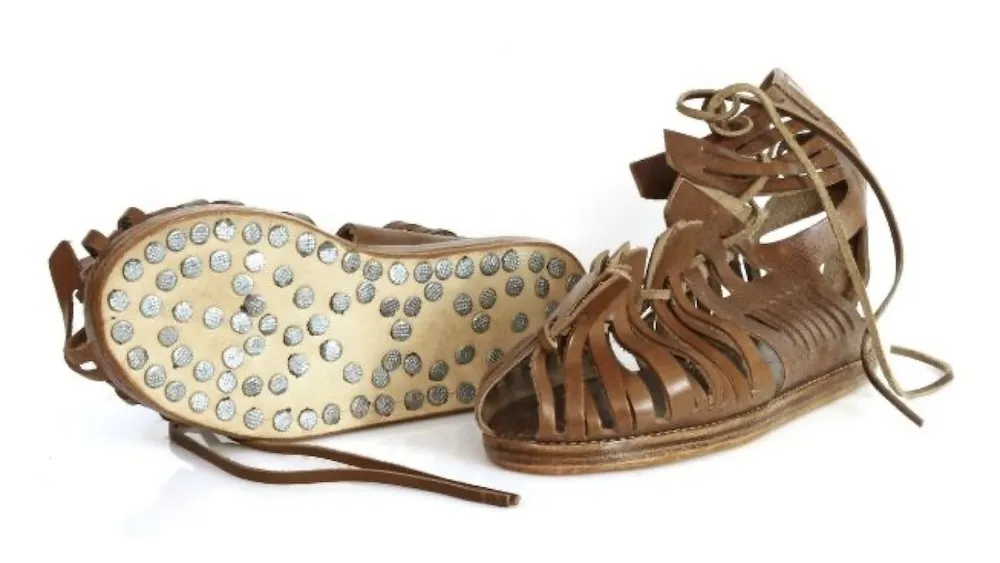A recreation of the military sandals. (Photo: Bavarian State Office for Monument Preservation)
Whether you’re putting together a stage play, a film, or a television series, if the story is set in ancient Rome, you know you’re going to have to get a lot of sandals on order. This task may sound more straightforward than it is, for simply copying the styles of classic productions that take place in the Roman Empire will put you on the wrong side of the historical research. We now know, for instance, that some ancient Romans wore their sandals with socks, a look that, seen in today’s cultural context, may not give quite the desired impression. And thanks to an even more recent discovery, it seems we also need to think about what’s on their soles.
Discovered near the Bavarian city of Oberstimm, “an ancient Roman sandal, largely decayed but reconstructed through X‑ray, suggests the spread of military fashion to local populations.” So writes Madeleine Muzdakis at My Modern Met, explaining that its type were known as caligae, which “had tough soles with hobnails [that] provided traction for the troops,” who did a fair bit of marching.
This particular caliga dates from between 60 and 130, around the time the Roman army switched from sandals to boots, and it shows that, during their time in this part of Bavaria, their footwear had an influence on what the civilians were wearing.

An x‑ray of the ancient sandals. (Photo: Bavarian State Office for Monument Preservation
The idea that standard-issue military gear could influence popular fashion may surprise anyone who’s ever had to wear a pair of “GI glasses.” But in its heyday, the Roman army wasn’t just a group of occupiers installed to project force on the part of a distant metropole, but an extension of civilization itself. If the hobnails in Roman military sandals afforded extra traction in addition to the subtle suggestion of cultural sophistication, so much the better. Though the question of just how far and wide this particular type of footwear (which appears reconstructed at the top of the post, and in X‑ray just above) spread through the Roman Empire remains a matter for further research, now would be as good a time as any for costume designers to stock up on nails.
via Live Science/My Modern Met
Related content:
Elegant 2,000-Year-Old Roman Shoe Found in a Well
Archaeologists Discover a 2,000-Year-Old Roman Glass Bowl in Perfect Condition
Based in Seoul, Colin Marshall writes and broadcasts on cities, language, and culture. His projects include the Substack newsletter Books on Cities and the book The Stateless City: a Walk through 21st-Century Los Angeles. Follow him on Twitter at @colinmarshall or on Facebook.

